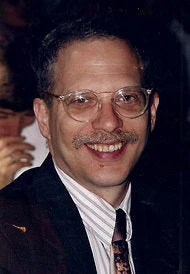
I first met John as a young lawyer in the late 1970s, while working on the then new issue of ozone depletion – he for US EPA, me for an environmental advocacy group. We quickly became close confidants working to leverage a unilateral US phase-out of CFCs to achieve an effective international agreement, the Montreal Protocol (recently celebrated at events hosted by the World Bank).
Before almost anyone, he saw the linkages between ozone depletion and climate change, and used his office to produce the first major government report on climate policy – “Can We Delay a Greenhouse Warming?” – in 1983. He was equally adept at highly technical matters such as the creation of a single metric for comparing the impact of ozone depleting substances and policy issues such as the design of environmental regulations.
John had already spent almost a decade thinking about climate change when the first major international scientific report on the subject was published in 1990 by the IPCC. He had identified the singular importance of commercially proven, highly cost-effective energy efficiency improvements as the most promising strategy for greenhouse gas reduction. The challenge was how to promote them without regulation. His solution– born of necessity, as EPA had neither the jurisdiction nor political support to regulate energy consumption–was voluntary rating and labeling developed in collaboration with industry. The Energy Star program, as it came to be called, was radical for its time but deceptively simple: identify, recognize, and promote the most efficient buildings and consumer products with a highly visible label and supportive marketing.
The program grew to cover buildings as well as dozens of consumer products with sizable impact on international markets. In 2011 Energy Star products helped prevent an estimated 210 million metric tons of greenhouse gas emissions — equivalent to the emissions from 41 million vehicles in the US— and reduced utility bills by $23 billion.
Press reports of John’s passing gave appropriate emphasis to the significance of the Energy Star programs. To his friends, John will be remembered for his brilliance, intensity, passion, and persistence. He never rose to the most senior posts within the government, probably because he cared much more about environmental progress than personal status. Yet his effectiveness also reflected considerable savvy in bureaucratic matters. A few of many lessons I learned from observing his special style and approach:
- It’s easier to receive forgiveness than permission; if you wait for the latter you may never accomplish anything
- A network of powerful friends can bring you considerable room to operate – but only up to a point
- You can accomplish a lot more by making your boss look good than by insisting on getting credit yourself, if your ego can take it
- It’s sometimes more effective to fight fire with fire than with a water hose – but also much riskier
- While persistence is a virtue, sometimes knowing when to change tactics and try something new is even more important


Join the Conversation